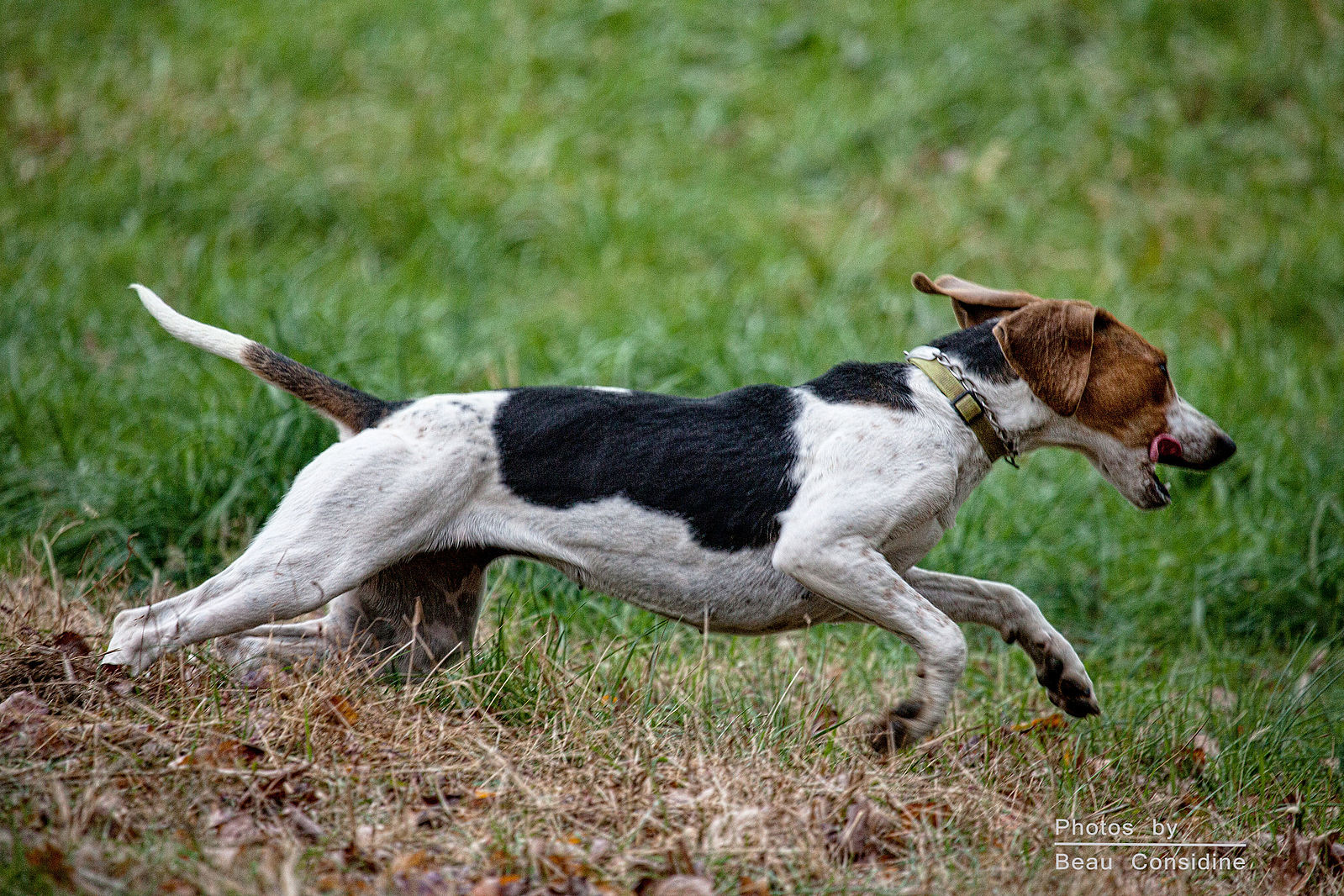
National Purebred Dog Day® celebrates purebred dogs, to be sure. We’re also interested in landraces, strains and lines not only because the owners think it matters, but because very often, these “shades of gray” dogs impact the breeds we regard as “black and white.” Does this make sense to anyone besides us?
A loyal NPDD page friend recently attended the Virginia Foxhound Show at Morven Park in Leesburg, Virginia, and lucky us! She took pictures and videos which we’ll be sharing in the weeks ahead. “Sally” told us that this may be the largest gathering of Foxhounds in the world, an event that includes American, English, Cross-bred, and Penn-Marydel Foxhounds.
We got to wondering. What is a Penn-Marydel Hound? Apparently, it’s an Eastern Shore strain of foxhound that was called “Penn-Marydel” as early as 1914, but it didn’t become recognized until 1934 when the Penn-Marydel Association was formed. The hound’s tricolor marking is indicative of the breed, and their name makes sense once you know that the dogs were once hunted solely in Pennsylvania, and on the Eastern Shores of Maryland and Delaware: Penn-Mary-Del. Get it?
Forty two hunts recognized by the Masters of Foxhounds Association claim to have some Penn-Marydels in their packs, and some huntsmen insist that Penn-Marydel foxhounds are unbeatable for their voice, nose, and ease of hunting. These people are fiercely loyal to these dogs. One article we saw quoted Joseph “Jody” Murtaugh: “With [Penn-Marydels] you can gauge your quarry, you can slow it down, so if you want to tone down the speed you can still stay within the breed. They’re so serviceable for all facets of hunting, if people know what they are doing.”
Penn-Marydel foxhound puppies are trained by a hunting horn, and by voice, coupled with “hanging” with experienced older foxhounds.
According to the book, Our Penn-Marydel Hound: A Historical Anthology, by H.L. Todd Addis (Mastof Press, 2012), the Penn-Marydel may have descended from the Gascon Hound of Aquataine, France. Additional sources mention that the Penn-Marydel might remind some of us of the good old American hound dog sleeping under the porch, a dog with ganglier limbs, a domed skull, longer and lower set ears that droop close to the head, and more relaxed ankles. He stands on flatter feet, and his toes spread more. His appearance is influenced by crosses of that French Gascon hound, as well as the old, “Southern Hound” (which we’ve mentioned here before) brought to North America by the English colonists.
Image of a Penn-Marydel Hound from Wikicommons

One thought on “Penn-Marydel Foxhounds”